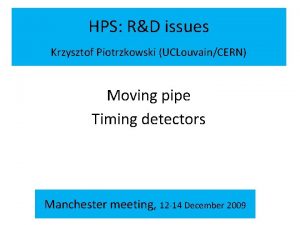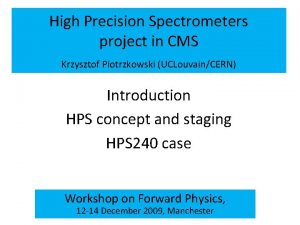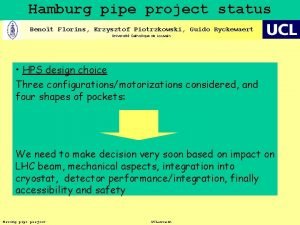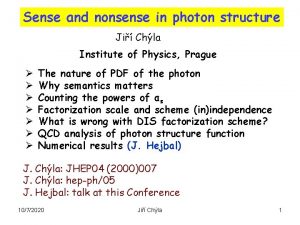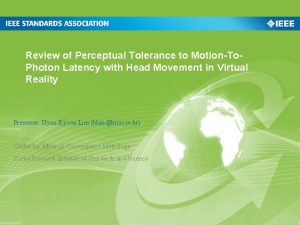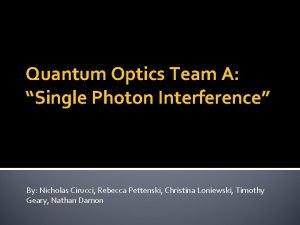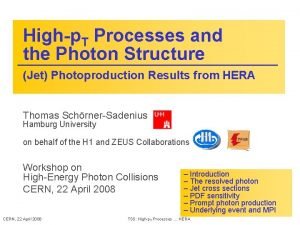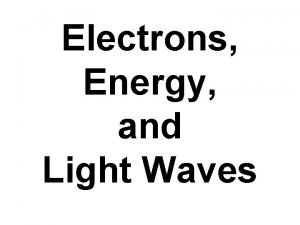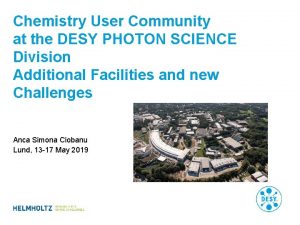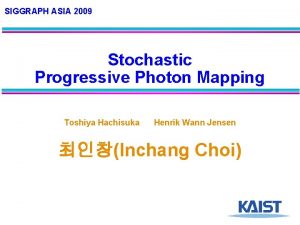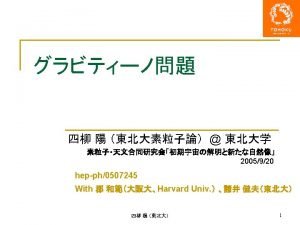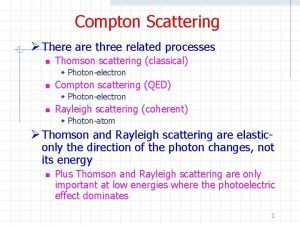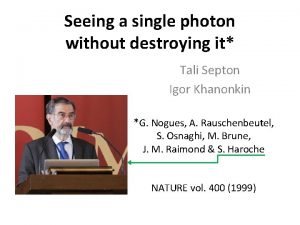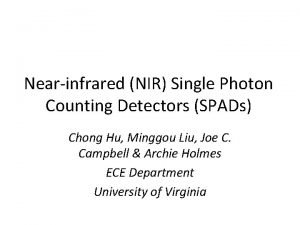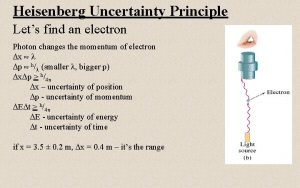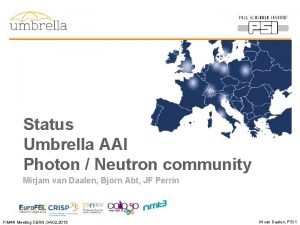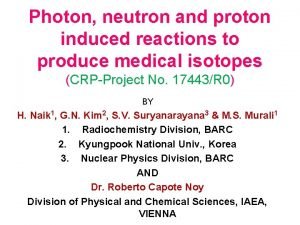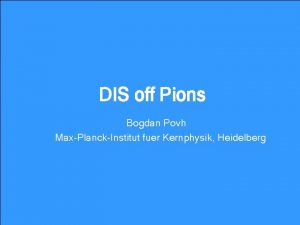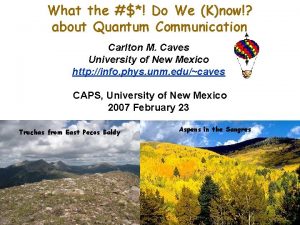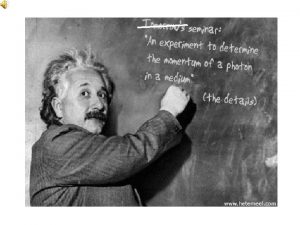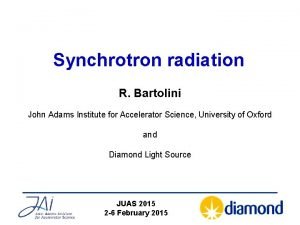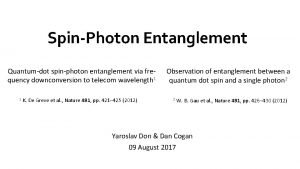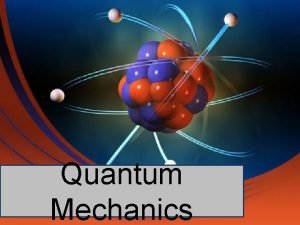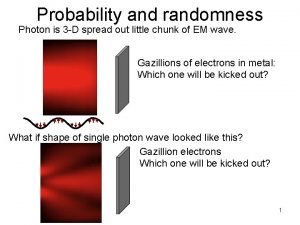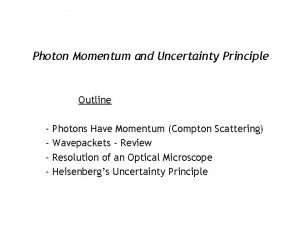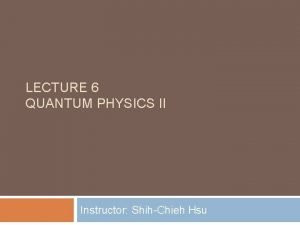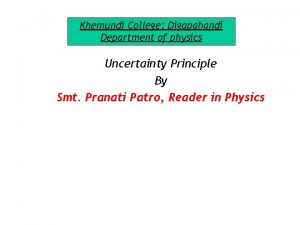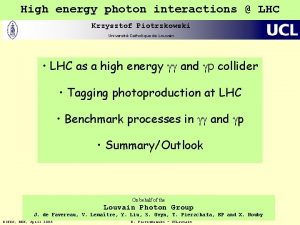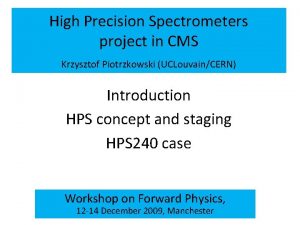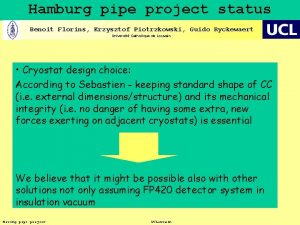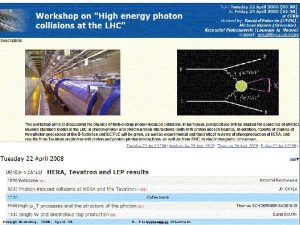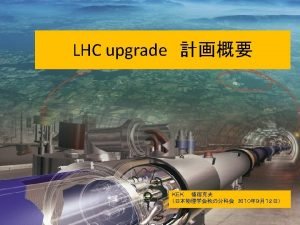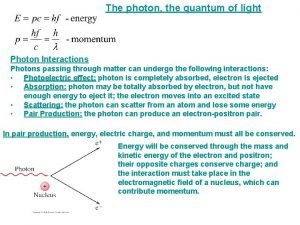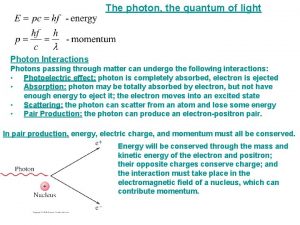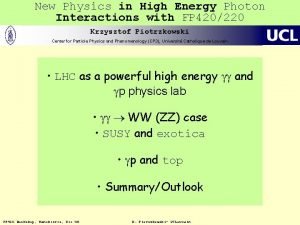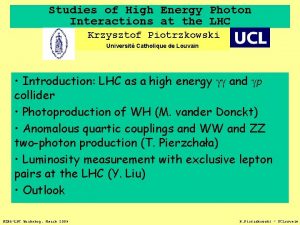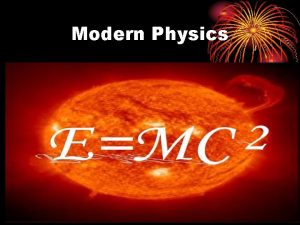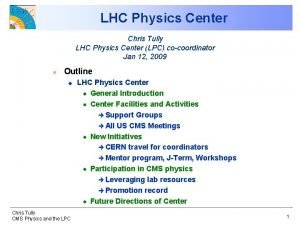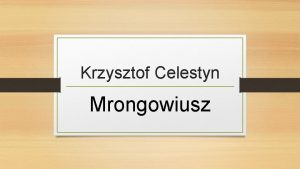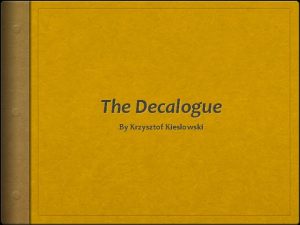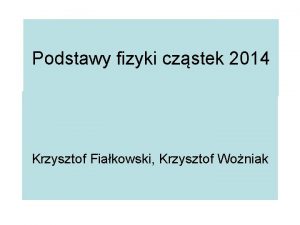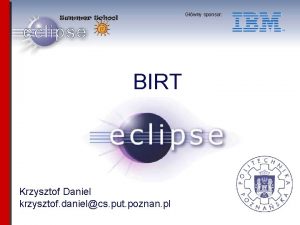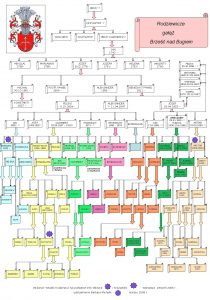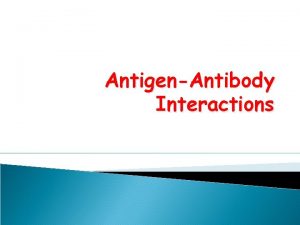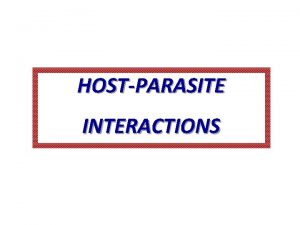High Energy Photon Interactions LHC Krzysztof Piotrzkowski Center































- Slides: 31

High Energy Photon Interactions @ LHC Krzysztof Piotrzkowski Center for Particle Physics and Phenomenology (CP 3), Université Catholique de Louvain • LHC as a high energy gg (and gp) collider • Benchmark processes in gg (and gp) • Summary/Outlook Results for photon physics at the LHC has been obtained within Louvain Photon Group of CP 3 J. de Favereau, V. Lemaître, Y. Liu, S. Ovyn, T. Pierzcha ła, KP, X. Rouby, N. Schul, M. Vander Donckt Presented at PHOTON 2007 in Paris and SUSY 07 in Karlsruhe Diffraction at LHC. Krakow, Oct'07 K. Piotrzkowski - UCLouvain

LHC as a High Energy gg Collider Phys. Rev. D 63 (2001) 071502(R) hep-ex/0201027 p p Observation: Provided efficient measurement of very forward-scattered protons one can study high-energy gg collisions at the LHC Highlights: • gg CM energy W up to/beyond 1 Te. V (and under control) • Large photon flux F therefore significant gg luminosity • Complementary (and clean) physics to pp interactions, eg studies of exclusive production of heavy particles might be possible opens new field high energy gg (and gp) physics Diffraction at LHC. Krakow, Oct'07 K. Piotrzkowski - UCLouvain 2

DISCLAIMER: This is NOT meant for studying all photon interactions at the LHC but those for which the QCD background can be strongly suppressed, as for example in the exclusive production of pairs of charged particles. This IS meant for studying production of selected final states in photon interactions at the LHC. Note: At Tevatron available energy too small for EW physics (but enough for lepton pairs – CDF recently published measurement of exclusive two-photon production of ee pairs) Initial inspiration: Diffraction at LHC. Krakow, Oct'07 K. Piotrzkowski - UCLouvain 3

Virtuality Q 2 of colliding photons vary between kinematical min = Mp 2 x 2/(1 -x) where x is fraction of proton momentum carried by a photon, and Q 2 max ~ 1/proton radius 2 Photon flux 1/Q 2 - Q 2 min sq 2/4 Kinematics/gg Luminosity for x>0. 0007, Q 2<2 Ge. V 2 protons scattered at `zero-degree’ angle W 2 = s x 1 x 2 Use EPA à la Budnev et al. * d. WSgg =‘gg : pp luminosity’ Note: it’s few times larger if one of protons is allowed to break up * error found in the elastic (Q 2 integrated) g flux for protons! Diffraction at LHC. Krakow, Oct'07 K. Piotrzkowski - UCLouvain 4

Diffraction at LHC. Krakow, Oct'07 K. Piotrzkowski - UCLouvain 5

Benchmark gg processes: Diffraction at LHC. Krakow, Oct'07 K. Piotrzkowski - UCLouvain 6

Exclusive lepton pairs Done at HERA, done at Tevatron! known Key signature: Acoplanarity angle for dileptons Y. Liu DY: qq mm Diffraction at LHC. Krakow, Oct'07 gg mm Calibration process both for luminosity and energy scales, has striking signatures and can be well triggered and reconstructed by central detectors alone Observed CMS cross-section for di-muons is about 3 pb K. Piotrzkowski - UCLouvain 7

T. Pierzchała Diffraction at LHC. Krakow, Oct'07 K. Piotrzkowski - UCLouvain 8

gg ZZ Two-photon production of W and Z boson pairs at LHC is ideal to study quartic gauge couplings a 0 W, ac. W, a 0 Z, ac. Z (LEP limits are poor due to limited phase space) (suppressed by 10 -3) assuming no background Diffraction at LHC. Krakow, Oct'07 • Should be possible to detect these events (esp. fully leptonic decays) even at highest pp luminosities K. Piotrzkowski - UCLouvain 9

Exclusive two-photon production of charged SUSY pairs – Production x-sections defined only by mass, charge and spin! • Very clean signature: Two (and only two) opposite charged leptons and missing energy Three post-WMAP m. Sugra benchmark points checked: • LM 1: light LSP, light sleptons & charginos, Tan(b)=10 • LM 2: medium LSP, heavy sleptons&charginos, Tan(b)=30 • LM 6: heavy LSP, medium right sleptons, Tan(b)=10 Diffraction at LHC. Krakow, Oct'07 K. Piotrzkowski - UCLouvain 10

First acceptance studies: Modified Calc. Hep for gg SUSY pair generation, and Pythia for decays Lepton (e/m) acceptance cuts: p. T > 3 (10) Ge. V, |h| < 2. 5 ; irreducible background due to gg WW Large signal acceptance, and not very sensitive to minimal accepted lepton p. T Diffraction at LHC. Krakow, Oct'07 K. Piotrzkowski - UCLouvain 11

Irreducible WW background issue • Use lepton flavor sharing in final state: For example, in SUSY case sharing between ee-em/me-mm is 45− 10− 45%, and for WW decays 25− 50− 25% • (To increase statistics: Consider inclusion of tau-jets in analysis) • In SUSY case much more missing energy due to LSPs first, missing ET can be tried… • Finally, assuming installed VFDs, event kinematics can be fully reconstructed by measuring forward protons (~75% acceptance possible); however, thanks to significant cross-sections interesting measurements should be possible already at low luminosity using central detectors only… Diffraction at LHC. Krakow, Oct'07 K. Piotrzkowski - UCLouvain 12

~e LM 1 point: WW suppression by factor ~2 using missing ET; twophoton t+t- pairs excluded Could be further tightened using reconstructed Wgg … Diffraction at LHC. Krakow, Oct'07 L ~e ~t t K. Piotrzkowski - UCLouvain R c W 13

Diffraction at LHC. Krakow, Oct'07 K. Piotrzkowski - UCLouvain 14

Preliminary observations Exclusive two-photon production of SUSY pairs is sizeable at LHC for sparticle masses below ~200 Ge. V • Large signal acceptance and low irreducible WW background • Very forward proton detectors crucial for exclusive event selection at high luminosity (triple coincidence condition)/ background control and suppression/data interpretation • This is a very interesting, novel laboratory for searches for any new phenomena in high-energy gg collisions… As for example, due to recently proposed sweet-spot SUSY, with light (~116 Ge. V) long-lived staus… Or, due to multi-charged particles production… Diffraction at LHC. Krakow, Oct'07 K. Piotrzkowski - UCLouvain 15

Doubly charged Higgs bosons L-R symmetric model implemented in Calc. Hep for gg event generation, then passed to Pythia for H++/-- decays (tau decays suppressed) Signal amplified by factor 16, with unique signature… Diffraction at LHC. Krakow, Oct'07 K. Piotrzkowski - UCLouvain 16

Doubly charged Higgs bosons, cont’d Example: 200 Ge. V Higgs case – use 4 lepton ‘golden’ events: e+e+µ-µ- or e-e-µ+µ+ with acceptance cuts, p. T > 3 Ge. V, |h| < 2. 5 : Note: ‘Irreducible’ background gg t+t+t-t- e+e+µ-µor e-e-µ+µ+ negligible! Diffraction at LHC. Krakow, Oct'07 K. Piotrzkowski - UCLouvain 17

Summary/Outlook • High-energy (at electroweak scale and beyond) photon-photon interactions have significant cross-sections at the LHC! • Tagging high energy photon (and diffractive) interactions at LHC, and at high luminosity, can be done by supplementing central detectors with very forward proton detectors. • Using double tagging, two-photon exclusive production, for example di-leptons (+ missing ET) can be studied at nominal LHC luminosity. • This offers novel, exciting and complementary SUSY/BSM seraches • Note: Triggering (at Level 1) of photon interaction is almost ‘given’, since both ATLAS and CMS are designed to trigger well on high p. T leptons! We cannot miss it! Diffraction at LHC. Krakow, Oct'07 K. Piotrzkowski - UCLouvain 18

FP 420 will allow for tagging also forward light ions as Ar or Ca -> place to make medium-energy gg, and diffractive physics! Diffraction at LHC. Krakow, Oct'07 K. Piotrzkowski - UCLouvain 19

Diffraction at LHC. Krakow, Oct'07 K. Piotrzkowski - UCLouvain 20

Diffraction at LHC. Krakow, Oct'07 K. Piotrzkowski - UCLouvain 21

Diffraction at LHC. Krakow, Oct'07 K. Piotrzkowski - UCLouvain 22

Both 220 and 420 m detectors are essential for tagging photon interactions (both photon-photon and photonproton) at the LHC: Diffraction at LHC. Krakow, Oct'07 K. Piotrzkowski - UCLouvain 23

Diffraction at LHC. Krakow, Oct'07 K. Piotrzkowski - UCLouvain 24

Diffraction at LHC. Krakow, Oct'07 K. Piotrzkowski - UCLouvain 25

Diffraction at LHC. Krakow, Oct'07 K. Piotrzkowski - UCLouvain 26

Diffraction at LHC. Krakow, Oct'07 K. Piotrzkowski - UCLouvain 27

Diffraction at LHC. Krakow, Oct'07 K. Piotrzkowski - UCLouvain 28

Diffraction at LHC. Krakow, Oct'07 K. Piotrzkowski - UCLouvain 29

Problem: Same signature (one or two very forward protons) has also central diffraction (i. e. pomeron-pomeron scattering) in strong interactions Both processes weakly interfere, and transverse momentum of the scattered protons are in average much softer in two-photon case a) `true’ distributions; b) distributions smeared due to beam intrinsic p. T; all plots normalized for p. T 2 < 2 Ge. V 2 Q 2 < 0. 01 Ge. V 2 p. T gives powerful separation handle provided that size of gg and pomeron-pomeron crosssections are not too different Diffraction at LHC. Krakow, Oct'07 K. Piotrzkowski - UCLouvain Assuming ultimate p. T resolution 100 Me. V; i. e. neglecting detector effects 30

Tagging two-photon events Assume detector stations at ~220 m where approximately x > 0. 01 range accessible Note: If only one forward p detected – single tag, but then non-elastic, p dissociative photon emission is possible Single tags: elastic only, or p-diss. incl. Assume 0. 1>x>0. 01, and Q 2<2 Ge. V 2 and for dissociative mass MN < 20 Ge. V Color: double-tags, hence elastic scattering only Diffraction at LHC. Krakow, Oct'07 K. Piotrzkowski - UCLouvain 31
 Krzysztof piotrzkowski
Krzysztof piotrzkowski Krzysztof piotrzkowski
Krzysztof piotrzkowski Krzysztof piotrzkowski
Krzysztof piotrzkowski Photon structure
Photon structure Motion-to-photon latency
Motion-to-photon latency Frequency units
Frequency units Jim al khalili
Jim al khalili Photon is our business
Photon is our business Photon structure
Photon structure What is a photon made of
What is a photon made of Electron vs photon
Electron vs photon Photon assay technology
Photon assay technology Desy photon science
Desy photon science Stochastic progressive photon mapping
Stochastic progressive photon mapping Lepton-photon
Lepton-photon Photoelectric and compton effect
Photoelectric and compton effect Single photon
Single photon Single photon
Single photon Photon uncertainty principle
Photon uncertainty principle Photon neutron
Photon neutron Mirjam van daalen
Mirjam van daalen Photon neutron
Photon neutron Photon neutron
Photon neutron Photon polarization
Photon polarization Momentum of photon
Momentum of photon Photon density formula
Photon density formula Photon polarization
Photon polarization A photon checks into a hotel
A photon checks into a hotel Photon chunk
Photon chunk Do photons have momentum
Do photons have momentum Momentum of the photon
Momentum of the photon Momentum of photon formula
Momentum of photon formula
